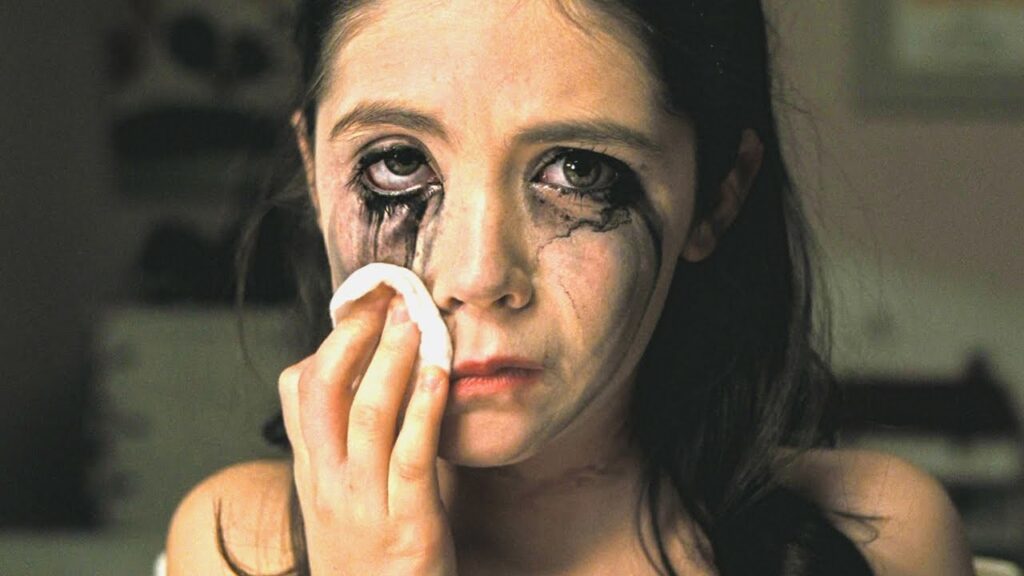True crime documentaries have taken the world by storm in recent years, captivating audiences with their gripping narratives and shocking revelations. From murder mysteries to tales of cults and cover-ups, these documentaries offer a voyeuristic look into the darkest corners of human behavior. But what happens when the line between entertainment and exploitation blurs, leaving viewers disturbed and haunted by what they’ve witnessed?
In this article, we delve into the unsettling world of true crime documentaries and explore the ethical dilemmas they often raise. From the denial of addiction in “There’s Something Wrong with Aunt Diane” to the chilling revelations in “Hunting Warhead,” we’ll examine the disturbing moments that left viewers speechless.
The Denial that Haunts Us
“The fact that her family is not willing to accept what really happened is mind-blowing.” This sentiment from a viewer of “There’s Something Wrong with Aunt Diane” encapsulates the eerie theme of denial that runs through the documentary. Diane Schuler’s tragic story leaves us questioning the depths of human denial, especially in the context of addiction.
As the toxicology report revealed, Diane had a blood alcohol concentration (BAC) of 0.19%, over twice the legal limit. High levels of THC were also found in her system. Yet, her family clung to the belief that she couldn’t have been intoxicated. This documentary becomes a chilling exploration of how denial can be as sinister as any murder mystery.
Table 1: The Shocking Toxicology Report
| Substances Detected | Concentration |
|---|---|
| Alcohol (BAC) | 0.19% |
| Unabsorbed Alcohol | 6 grams |
| THC | High levels |
In the words of one recovering alcoholic, “I’d go to work, hang out with people and they’d be totally unaware I’d drank half a bottle of vodka that morning.” This hidden world of addiction is brought to light, and viewers are left contemplating how well they truly know those around them.
The Chilling Casualty of Addiction
Viewers of “There’s Something Wrong with Aunt Diane” are confronted with the terrifying reality of addiction. Diane’s struggle with alcoholism is eerily relatable for many. The subtle signs that go unnoticed, the hidden bottles, and the ability to maintain a facade of normalcy are all too familiar to those who have battled addiction or known someone who has.
“I believe she woke up and felt like shit and had a few gulps of vodka to feel ok, got carried away trying to get home and ended up in blackout. Those poor children,” one viewer empathized. This stark portrayal of addiction’s destructive power resonates deeply with many, making us reflect on the hidden struggles people face.
Disturbing Footage: Crossing the Line
True crime documentaries often grapple with the balance between storytelling and sensationalism. “There’s Something Wrong with Aunt Diane” offers a prime example of this, with its close-ups of Diane’s lifeless body. Some viewers found these images gratuitous and disturbing.
Table 2: Shock Factor in True Crime Documentaries
| Documentary | Shocking Footage |
|---|---|
| “There’s Something Wrong with Aunt Diane” | Close-ups of deceased body |
| “Gladiator Days: Anatomy of a Prison Murder” | Graphic footage of a prison murder |
| “Love Has Won: The Cult of Mother God” | Disturbing imagery of cult activities |
| “Hunting Warhead” | Graphic interviews with criminals involved |
The question arises: does the inclusion of such graphic content enhance the storytelling, or does it exploit the victims and their families for shock value? This debate underscores the ethical tightrope that true crime documentarians must walk.
The Shocking Revelations of “Hunting Warhead”
While not a documentary movie but a podcast and investigative series, “Hunting Warhead” is described as even more disturbing than the Jared Fogle story. The podcast delves into the world of online child exploitation, making it one of the most challenging listens for many. It includes interviews with perpetrators, exposing the dark underbelly of the internet.
In the world of true crime, “Hunting Warhead” stands out for its unflinching exploration of a horrifying subject. Listeners are left feeling physically sick as they confront the gruesome realities of child exploitation.
Table 3: The Unforgettable Impact of “Hunting Warhead”
| Podcast | Impact |
|---|---|
| “Hunting Warhead” | Physically sickening, emotionally draining |
From Subway Celebrity to Notorious Criminal
Jared Fogle, the once-famous Subway spokesperson, transformed from a symbol of weight loss success to a notorious child predator. The shocking revelation of his crimes in the documentary sent shockwaves through the nation.
“I told my girlfriend (at the time) way back in 2009 that we had almost fought him and his buddies earlier in the year at a bar,” one person shared. Fogle’s sinister double life, juxtaposed with his wholesome public image, serves as a stark reminder that evil can hide in plain sight.
Conclusion: Exploring the Boundaries
True crime documentaries have the power to captivate and disturb in equal measure. They delve into the depths of human behavior, exposing the darkest corners of society. However, they also raise ethical questions about the portrayal of graphic content and the potential exploitation of victims.
As viewers, we must navigate the fine line between fascination and discomfort, always mindful of the real lives and tragedies behind the stories. While these documentaries may leave us haunted, they also shed light on the complexities of human nature and the enduring need for justice.
So, the next time you embark on a true crime documentary binge, be prepared for the chilling moments that will keep you awake at night. And remember, the darkness of reality can sometimes be more disturbing than any fictional horror story.




